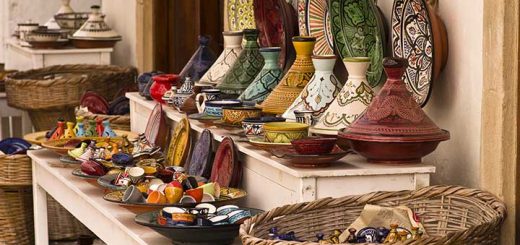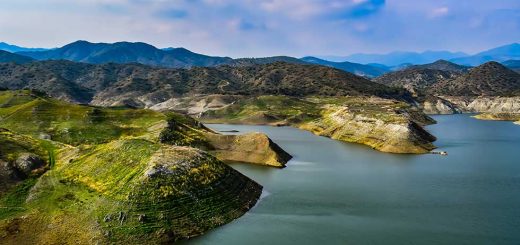Netherlands Travel Guide
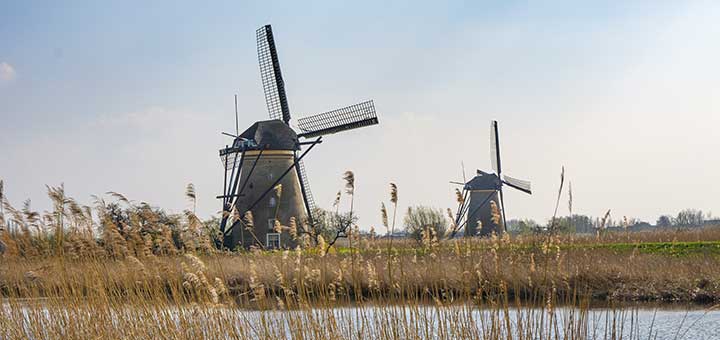
For a small land almost half of it under the water once, Netherlands is a surprisingly urbanized and well-developed European country with a dense population and a bunch of places and attractions for you as a tourist to visit. In fact, the country is just the size of a small American state but it offers a lot to see, enjoy, and experience, mostly man-made but also natural and the majority of it below the sea level. The natural landscape of the country may not be very diverse, it is mostly as flat as a pancake, but very lush and fertile, dotted with canals and drainage ditches, idyllic and atmospheric country towns and villages nestling gabled townhouses, romantic canals, and church spires.
Despite the small size of the country and the density of its nation, each small village in the Netherlands has its own identity and character. The Netherlands is a leading country in the sense of so many different accents and dialects under one roof. In spring and summer the country blossoms into a fairytale of endless fields with flowers and splashes of colours. In the west and the north of the country is where the beautiful coastline stretches and where you can enjoy amazing sandy beaches.
The country was once a great European power, once challenging England for a world naval supremacy and a second to none standard of living all throughout the 17th century. Not much has changed since then considering the fact that the Netherlands is one of the most developed countries in the world with the highest population density in Europe where most of the people speak English and a well-organised infrastructure and public transport system allowing for every visitor of the country to reach to every place and little town easily and effectively.
When to go?
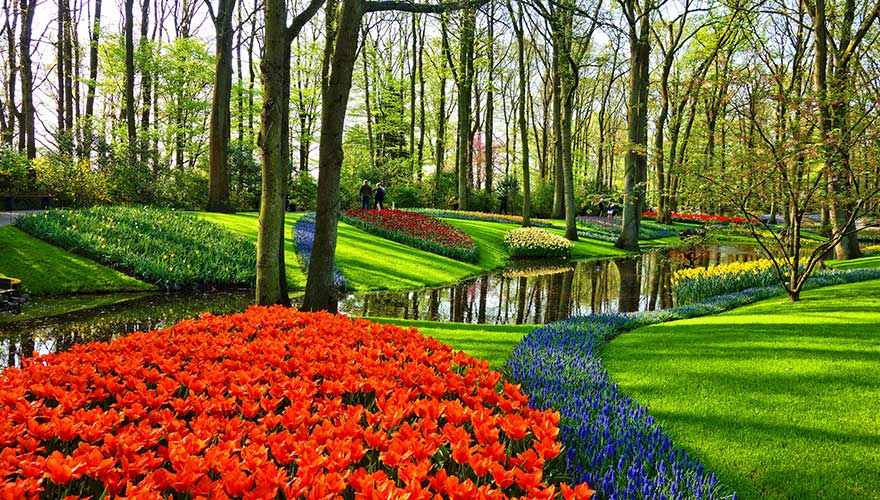
In general, the Netherlands is a country enjoying mild summers and moderately cold winters that are easy to survive. Many of the visitors of the country are attracted by the blooming tulip fields in spring so if you want to enjoy them you better book a trip during mid-March to mid-May. The further south you go, the more temperatures rise. The western provinces located on the coastline of the North Sea are usually wetter, with warmer winters and colder summers, while the eastern provinces experience a more severe climate with the influence of Europe. If rainy weather is concerning you, you may not be that happy to find out that in the Netherlands it rains any time of the year so you cannot be prepared for that.
Where to go?
Naturally, the capital city of the Netherlands, Amsterdam, is the most popular destination in the country where the majority of the tourists and visitors are going. Surprisingly, for such a small country that is easy to access from anywhere of the world, the majority of the Netherlands is relatively unexplored by the tourists. Rotterdam and Den Haag are two more popular cities in the Netherlands that have a fair share in visits but the rest of the country is almost untouched by foreigners. For the majority of the visitors, Amsterdam is equal to the Netherlands and they assume that there is nothing worth visiting if leaving the capital city and this cannot be more untrue.

Amsterdam
However, if you are looking for a more cosmopolitan and urbanized vibe, there is no doubt that no other place in the country can offer that as much as Amsterdam. With so many attractions around the city, great restaurants and a lively nightlife scene, the capital welcomes every tourist with a lot of entertainment. Some of the highlights in Amsterdam include the Anne Frank Huis, where the young Jewish diarist hid away from the Nazi occupation, the Rijksmuseum and its collection of wonderful Dutch paintings including works by Rembrandt, the amazing Van Gogh Museum, and more.
Head west beyond Amsterdam and you will be able to explore the provinces of Noord- and Zuid-Holland, mostly flat stretches of land and predominantly urban regions. Zuid-Holland is home to the grouping of towns known collectively as the Randstad, the group of the largest cities in the country where the majority of the Dutch population lives. The infrastructure of this part of the country is flawless with a bunch of trains and buses to lead you to every corner and nook of the regions.
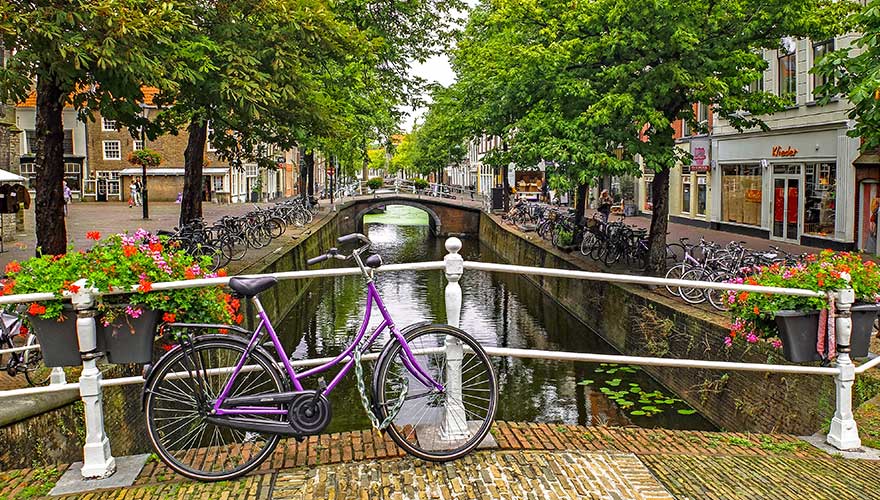
Delft
When in this part of the Netherlands you are recommended to visit the relaxed city of Haarlem, the old university town Leiden, the city of Delft where you can see a lot of medieval buildings and a canal-girded centre, the port city Rotterdam and its modern architecture, the relaxed and laid-back city Den Haag that is a seat of the Dutch government and a place where you can enjoy a bunch of interesting museums.
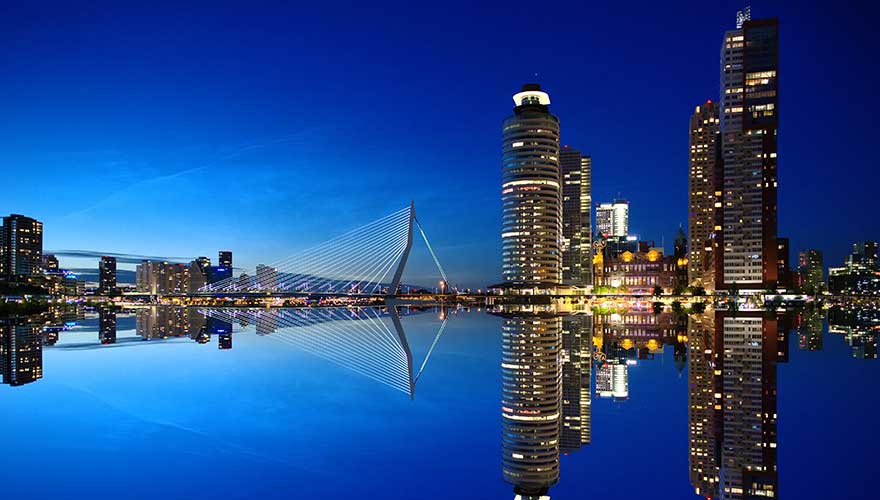
Rotterdam
The countryside of the regions is equally attractive so make sure to visit the magical bulb fields in the Keukenhof gardens. To the north of Amsterdam is where the old Zuider Zee ports of Enkhuizen and Hoorn are located. There you can also stop by the small town of Alkmaar to enjoy its infamous cheese market.
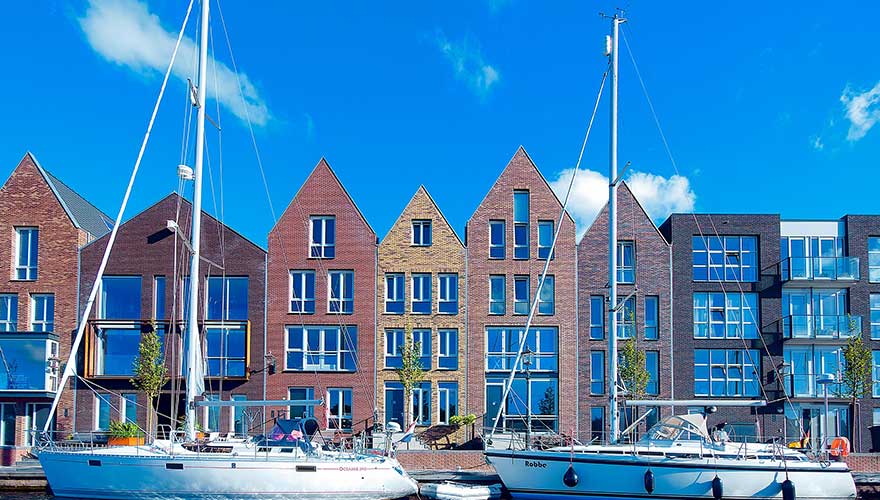
Haarlem
Beyond this region is located a more rural and sleepy region but also very idyllic and atmospheric one. The far north of the Netherlands is spectacular with a chain of islands known as the Frisian Islands that are the natural barrier between the North Sea and the Waddenzee. With their pastoral charm, the islands are a prime resort territory and a favourite destination of the Dutch people, especially during the summer holidays. Almost all islands lay in the territory of the province of Friesland. The capital city of the province is called Leeuwarden and along with the neighbouring Groningen, both places are visitable cultural centres.
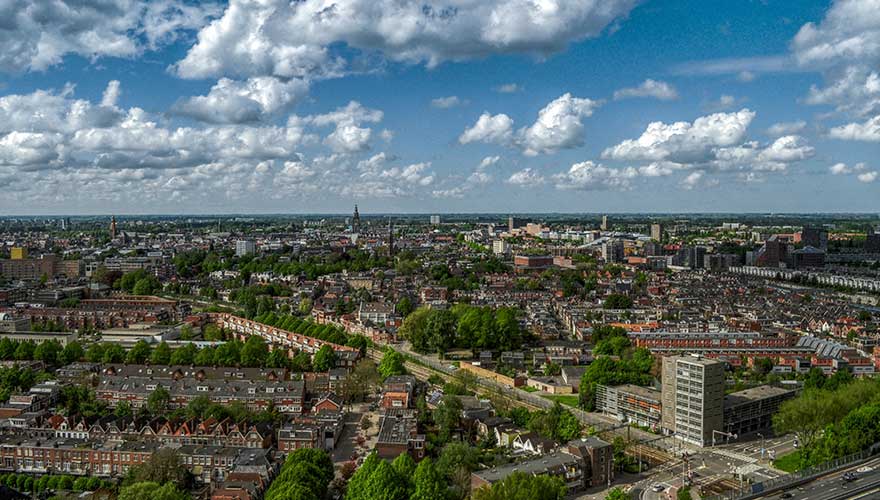
Groningen
The south part of the Netherlands is where the provinces Overijssel and Gelderland are stretching their lush and beautiful lands dotted with small sleepy villages and old towns such as Deventer and Zutphen. There are two more stops you would like to visit when in this part of the country. The first one is the Arnhem town, almost fully rebuilt after the World War II battles and close to the infamous Hoge Veluwe National Park, and the second one is the lively college town Nijmegen.
Head even further south and you will be able to explore the predominantly Catholic provinces of Limburg, Noord-Brabant, and Zeeland. Zeeland is mostly composed of series of low-lying islands and the infamous Delta Project that protects this chain of islands from the waters of the North Sea. Noord-Brabant is mainly farmland with two main cities both very historic – Breda and Hertogenbosch.
The modern manufacturing hub Eindhoven is also situated here and it is a favourite spot for the tech-savvy visitors as it is home to the electronics giant Philips. The province of Limburg is mostly hilly as a contrast to the rest of the country. This slim stretch of land is reaching to the Netherlands’ borders with Germany and Belgium. Maastricht is the cosmopolitan and modern capital of the province and also of the country’s most convivial cities.
Essentials
- The population of the Netherlands is over 16.6 million people, almost 800 000 of them live in the capital, 620 000 live in Rotterdam, half a million lives in Den Haag. The country is separated in 12 provinces.
- 1/5 of the country is made up of water. The lowest point in Europe is located in the Netherlands – seven meters below sea level.
- The country has the highest level of bicycle usage in the world with 1.25 bikes per person. Surprisingly or not, every minute one bike is stolen in the country.
- The country is a constitutional monarchy, Queen Beatrix is the queen of the Netherlands.
- Liquorice or drop is the favourite candy of the Dutch people. Actually, is not that true that liquorice is candy as it often comes in salty and different flavours. Despite the fact that each Dutch person east four kilos of the candy a year, it is not very liked by tourists and visitors because of its strange taste.
- Just like hygge in Denmark and Norway, The Dutch people have their gazelligheid – cosiness and having fun at once.
- Accommodation is one of the major expenses when visiting the Netherlands so be prepared with a good budget because of the high standard of living in the country. Budget alternatives are available so make sure to consider a private room in a B&B arranged via a local tourist office, campsite, or budget-friendly HI-registered hostels. Sometimes it is hard to find a room not booked, especially during the summer and over holiday periods.
- Vrienden op de Fiets – Or Friends of the Bicycle is an organisation in the Netherlands dedicated to people cycling or walking around the country. With an annual fee of just 8 Euros per year, you will be sent a book of a few hundred Dutch addresses where you can stay the night in someone’s home for a fixed price of 19 Euro per night and per person.


